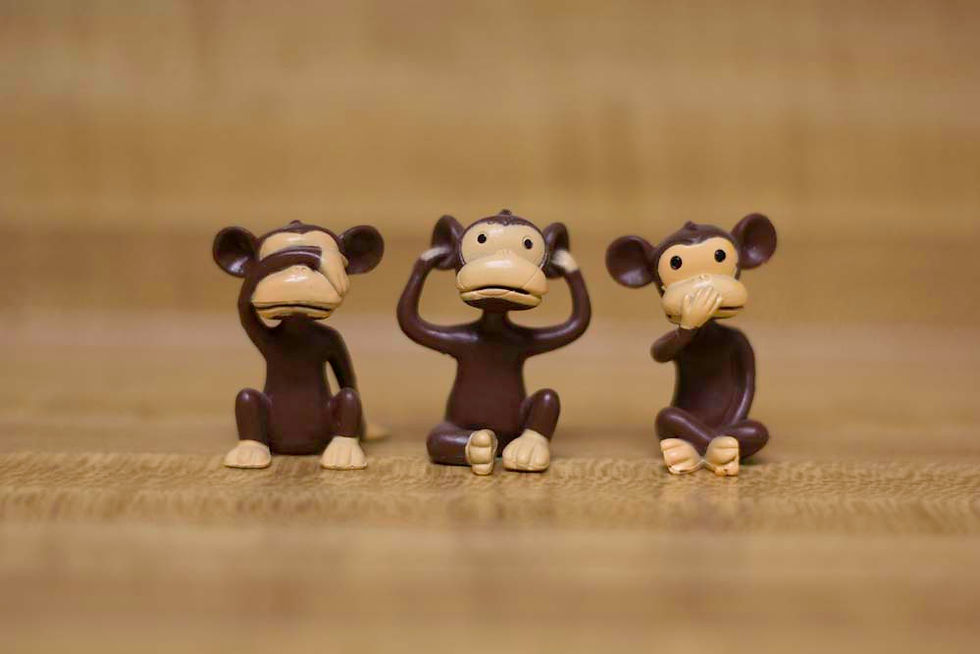COVID Communication: Three Things to Ponder
- gemmuseums
- Oct 19, 2020
- 3 min read

John Snape - Own work, CC BY-SA 3.0, https://commons.wikimedia.org/w/index.php?curid=28489470
Of all the things COVID-19 has unmasked for museums--race, class, money, #museummetoo, digital sophistication, collecting practices--communication is rarely at the top of the list. And yet, for those of us who are back in the office, attempting a new normal-normal, communication is the core of what we do, and it's challenging.
Have you ever finished work and felt as though maybe you hadn't said anything even though you engaged with colleagues all day? You weren't mean. You weren't demanding, but throughout the day it felt as though there was a scrim between you and your team? As if whatever you were saying, muffled by your mask, a piece of plexiglass, six feet of separation, or Zoom, just didn't compute?And then, as a kind of coup de grâce you learn your team thinks it communicates poorly. You could blame the masks, Zoom, the plexiglass, or the six feet of separation or maybe you could accept the challenge and try to improve your own communication skill set. I am, and here are three things I'm thinking about:
Poor communication is a symptom not a cause: When humans in the workplace grapple with difficult but ill-defined issues, people tend to fixate on communication. What they really want is information, but because information is slow in coming they focus on a human, suggesting their director or the board are poor communicators. Perhaps you've heard the expression, "If you're a hammer, everything looks like a nail?" If you make communication the problem, you may miss the real issue altogether. Gather your team, and ask them to focus not on communication, but on their work. Perhaps it feels impossible to plan anything--the annual spring fundraiser or book an exhibit for 2022-- because no one knows how long the pandemic will continue? Then the issue isn't necessarily communication, but planning in the face of so many unknowns.
Which segues to communication as something you participate in, not something that happens to you. Too many times the workplace turns us into children, waiting for someone further up the food chain to tell us what's coming and what to do. Yes, many of our museums and heritage organizations are hierarchical. Your direct report, whether that's the director or chief curator or shop manager may know things before you do, but when they talk, whether six feet away, in an email, or via Zoom, that's communication. Be present. We need to bring our whole selves to these interactions so we don't miss information because communication is also listening, reading and comprehending. COVID has made that more challenging which is why we all need to work harder.
Last, communication is value-driven. It is a way to convey who you are. It's also a way to empathize. Be humble. If you see a colleague in trouble, see if you can help. If you feel a story's not being told, ask why not. If you have an idea, make a proposal. Each of us is unique in our experiences, our world view, the culture that shaped us. We all want to work in the kind of museum where we can be our whole self, but we need to act on the fifty-percent of the equation that's ours. If we hold back and blame colleagues for not understanding us is that their fault? If an idea doesn't make it onto the agenda, should we blame the team because they didn't intuit what was in our head?
We hear a lot about when the pandemic is over as if someone somewhere will press a switch, and we will return to life as we knew it. But we know it won't be like that, and also that once there is a reliable vaccine, the mending and the healing will take a long time. Many days it's difficult to stay focused. Take time to let your staff talk about how the pandemic has affected them personally. Meet regularly in small groups or Zoom's breakout groups to make sure no one's voice gets lost. Let's all pledge to help each other feel valued, appreciated and confident.
Joan Baldwin















































Comments